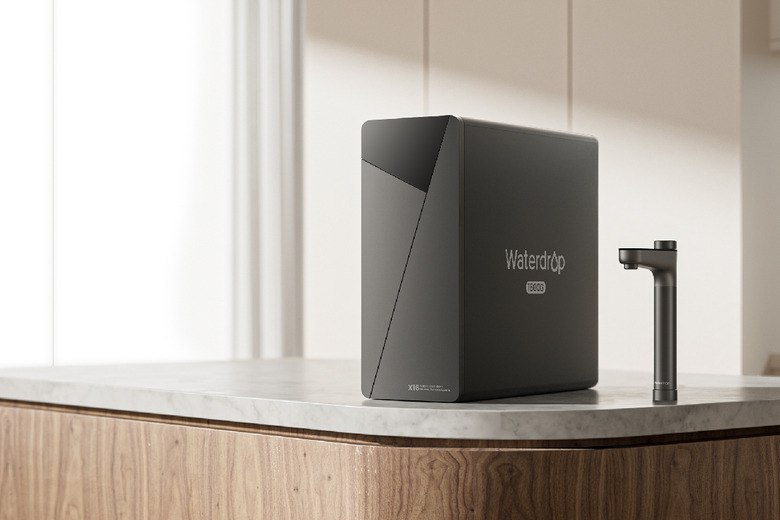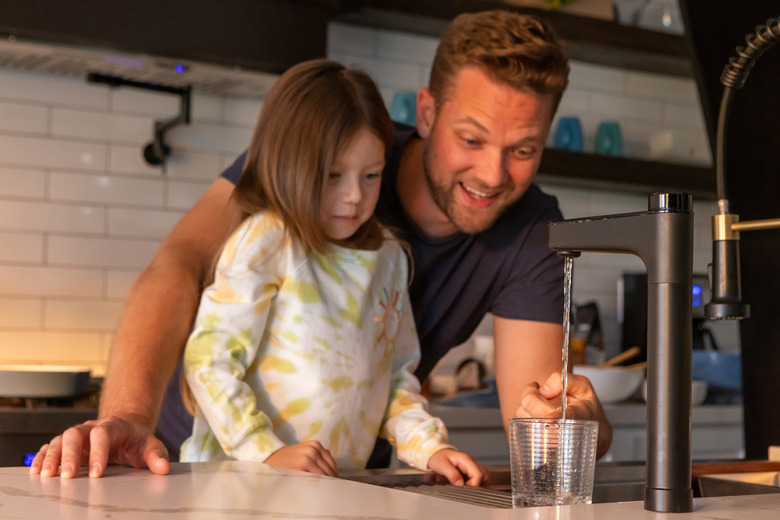Waterdrop Tankless RO Vs Tank RO: Which Water Filter Is Right For You?
We may receive a commission on purchases made from links.
Drinking unfiltered water straight from the tap isn't necessarily a good idea for you, your family, or your pets. Even if your tap water smells and tastes fine, it may still have contaminants that can be harmful over time. That's true whether your home uses municipal water or well water. Examples include chlorine, industrial pollutants, heavy metals, fertilizers, and even bacteria or parasites. Sure, you can buy bottled water instead, and your water will likely be free of those harmful contaminants. Of course, that introduces two new problems: Bottled water is very expensive, and it's full of microplastics from the bottles.
The answer is a reverse osmosis system, which is typically referred to as an RO system. But should you buy a typical tank-based RO system or a newer tankless RO system like the ones made by Waterdrop Filter? I have tons of experience with both types of water filter systems, and I'm going to explain the pros and cons in this deep-dive comparison.
What is an RO water filter system?
Before we dive into a comparison, there's an obvious question that needs to be answered first: What is an RO system?
RO is short for reverse osmosis, and it's a common process used to filter contaminants out of water. It's not the only type of water filtration technology out there, but it's widely regarded as the most effective and most efficient way to filter impurities from drinking water.
Without getting too deep into the weeds, reverse osmosis works by pressurizing water and pushing water through one or more filters. Each filter includes a semipermeable membrane with tiny pores. The pores allow water molecules to pass through, but they're so small that contaminants in the water can't fit. Then, the RO system flushes away the contaminants in wastewater that is pumped out to your sink's drainage system.
How effective are RO systems, you ask? A high-quality system like the ones made by Waterdrop Filter can remove up to 99% of common impurities and contaminants.
Tank RO system vs. tankless RO system
There are two main types of under-sink RO systems used in households. The older type is a tank system, and it works sort of like a typical water heater. Water is fed into the system and stored in a big (or not-so-big) tank. Then, when water needs to be dispensed, it's pushed out of the tank.
A tankless RO system can be compared to a newer tankless water heater. Instead of holding water in a big tank and heating it constantly until it's needed, tankless systems heat water on demand. Similarly, tankless RO water filter systems pull water straight from your sink's cold water supply line and filter it on demand. The water is filtered and dispensed simultaneously instead of sitting in a tank waiting to be used.
Here's a more detailed comparison between the two types of systems:
| Tank RO System | Waterdrop Tankless RO System | |
| Space-Friendly? | No, requires twice the space under the sink. | Space savings under the sink of 50 to 75%. No limits on water volume imposed by tank size. |
| Water Flow Speed | Low, Once the tank is emptied, water output is greatly reduced until the tank is refilled. | 1600GPD, Industry-leading Water flow rate; X16 delivers water at an incredible rate, filling a 6oz cup in just 2 seconds |
| Purity | There is a possibility of bacterial growth in the storage tank over time that is nearly impossible to visually detect. | Tastes fresher and healthier. No tank and less exposed connections limit the possibility of bacterial growth in the system. |
| Wastewater Ratio | Even with ideal water pressure, efficiency is low to average, and more wastewater is sent down the drain. | 3:1 wastewater ratio, less wastewater, and more sustainable. Tank RO wastewater ratios on the market are typically around 1.5:1 or 2:1. |
| Maintenance | Expensive installation and maintenance. System design requires more effort and time to perform filter maintenance. | Easy Installation and low maintenance expense. Filter changes and maintenance are much easier and faster. |
| Electricity Required | Doesn't require a power supply, except for a system with a pump or a UV filter | Doesn't require a power supply, except for a system with a pump or a UV filter |
| Price | ~$300-$700 | ~$799-$1999 |
The main problems with tank RO systems
When I moved into my current home nearly a decade ago, drinking water was one of the first things I thought about. I had no intention of letting my family drink unfiltered tap water, so I knew I wanted an RO water filter system in our kitchen. But since we had just made the single largest purchase of our lives — a house — I didn't want to spend much money on a water filter. I didn't even want to spend much time researching RO filters. Instead, I just hopped onto Amazon and bought one of the cheapest RO systems I could find.
That was a big mistake.
I bought a very popular system that had decent ratings, so I thought it would be fine. I should've spent more time doing research, however, because the system had two big problems. First, it had a small water tank that would always run out of water if I had to fill some pitchers or big pots. The second problem is the one that drove me crazy, though: The flow rate.
It would take me about a minute to fill a single glass of water, and it was absolutely infuriating. Think about standing there holding a cup for 60 full seconds, waiting for it to fill. I drink a ton of water each day, too. That means I would spend a combined 12 minutes, 15 minutes, or even more time each day standing at my sink waiting for glasses of water to fill. And don't even get me started on how long it took to fill a pasta pot.
When I finally couldn't take it anymore, I decided that I wasn't going to make the same mistake twice. I did tons of research this time, and I ended up buying a Waterdrop Filter tankless RO system instead. Specifically, the Waterdrop G3P800 RO System. And when I tell you that I love this RO system, it's not hyperbole.
The Waterdrop Filter G3P800 was truly a game-changer for my family. Not only does the water from the Waterdrop system taste better than my old filter, it also dispenses sooooooo much faster. It used to take about one minute to fill a 16-ounce glass of water. With the Waterdrop Filter system, it takes around 10 or 11 seconds. It's like heaven... and it's not even the best or fastest RO system that Waterdrop offers.
Thanks to that experience, I'm uniquely positioned to compare tankless RO systems with tank systems. I can also discuss the benefits of a Waterdrop Filter tankless RO system compared to RO systems with tanks because I have years of experience with each different type of system.
Which Waterdrop Filter tankless RO system is right for you?
Waterdrop is a leader in tankless RO systems. The company's water filtration systems consistently outrank rival RO systems in comparisons and professional reviews. User reviews are the same, and you can see for yourself on Waterdrop's site or on third-party retailer sites like Amazon.
People love how compact Waterdrop Filter RO systems are and how well they filter impurities out of drinking water. Like me, they also love how fast the flow rate is on Waterdrop's RO filter systems. And finally, user reviews constantly mention how good water tastes once it has been filtered by a Waterdrop RO system.
If you're wondering which Waterdrop Filter tankless RO system is right for you and your family, you should know that there are plenty of options out there.
The newest and best system Waterdrop offers is the Waterdrop X16 RO system. It has tons of cutting-edge features, and the tap has a sleek design with touch control.
This is also Waterdrop's fastest model ever, with a flow rate of 1600 GDP. That means you can fill a glass of water in as little as 2 seconds!
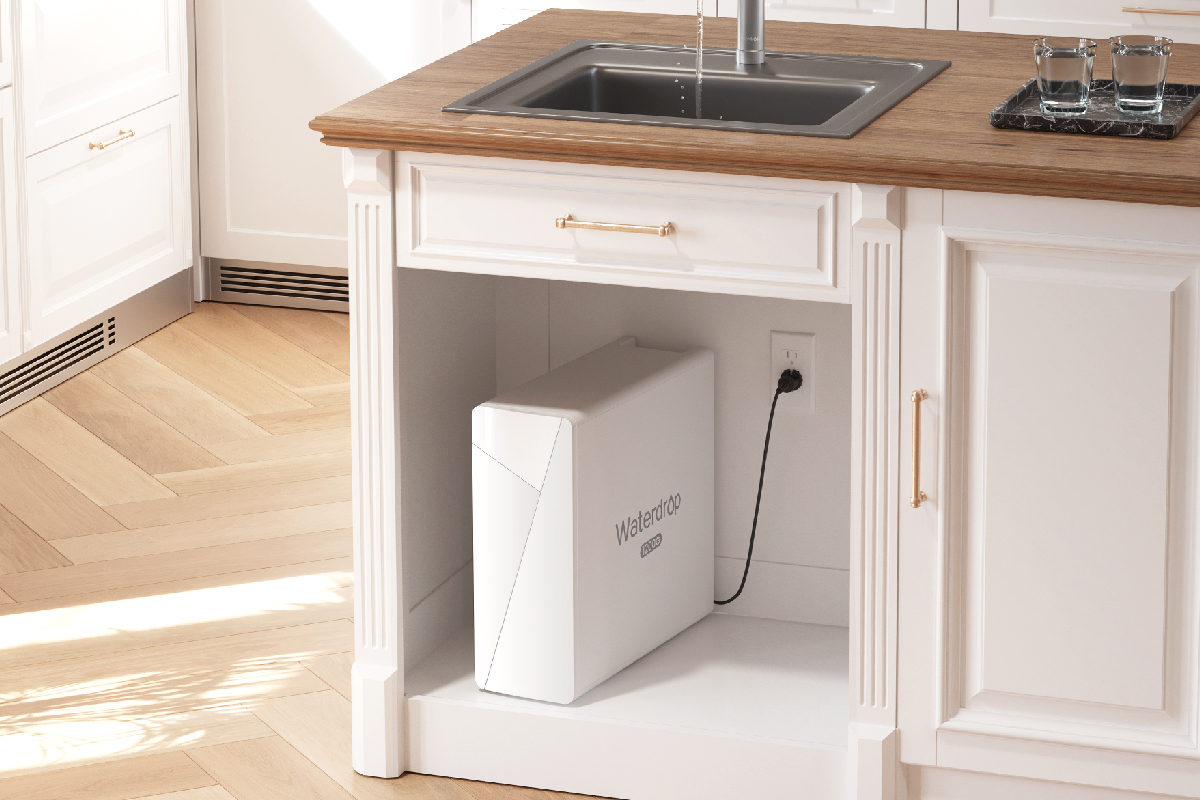
There's also a less expensive version called the Waterdrop X12 RO system. It offers a similar design and a 1200 GDP flow rate, which is still very fast.
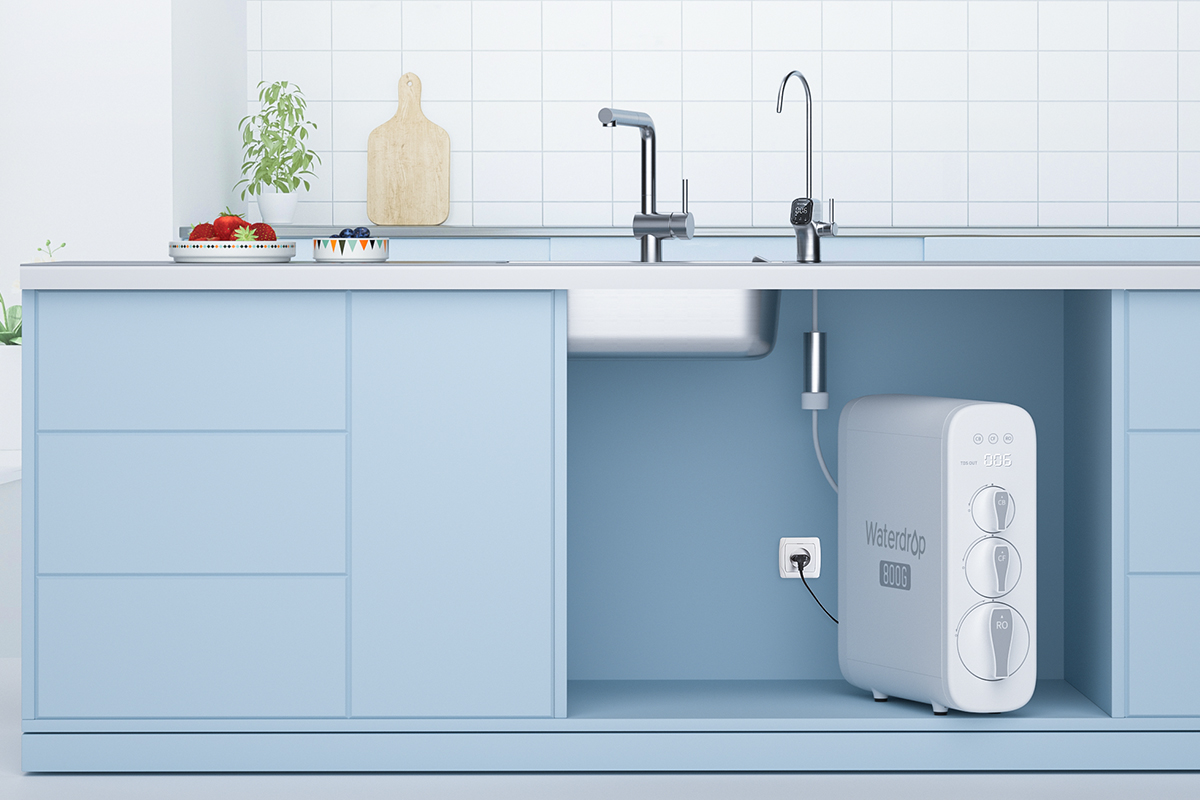
Families looking to spend a bit less money should definitely check out the Waterdrop G3P800 RO system.
That's the one I use myself, and it's terrific. It doesn't have the fancy new tap that you get with the X16 and X12, and the 800 GDP flow rate isn't as fast. Also, the X series uses 11-stage filters while the G3P800 uses 9-stage filters. You still get delicious water that's filtered and UV-sanitized with the G3P800, though. Also, as I mentioned earlier, this model is still quite fast despite not being on par with X series flow rates.
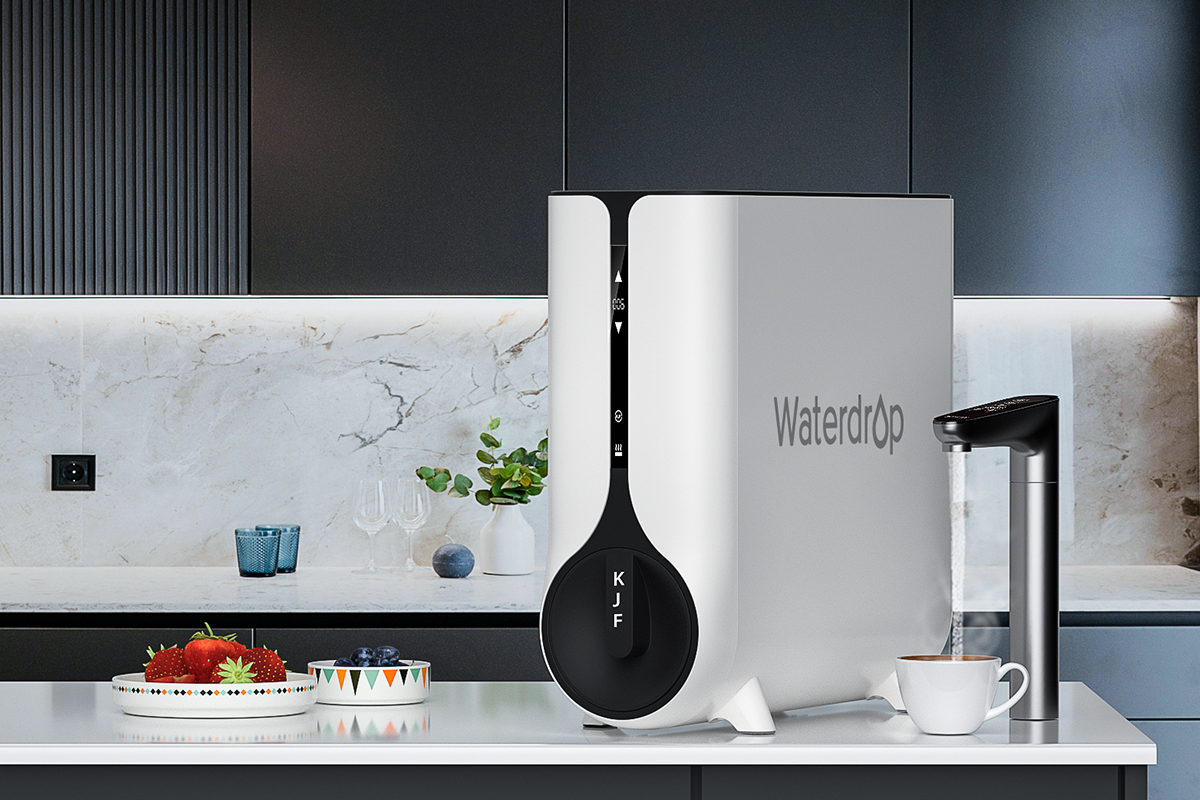
Finally, there's another option for people who want hot water on demand. The Waterdrop K6 RO system dispenses hot and cold water, and it offers a 600 GDP flow rate. That's still much faster than what you would get with just about any comparable tank RO system.
Below, you'll find a more detailed comparison between these four RO systems. There are also other RO systems that you can check out on the Waterdrop website.
| Model | X16 Reverse Osmosis System | X12 Reverse Osmosis System | G3P800 Reverse Osmosis System | K6 Instant Hot Water Reverse Osmosis System |
| Usage Scenarios | Kitchen Gym Office Recreational Vehicle (RV) | Kitchen Gym Office Recreational Vehicle (RV) | Kitchen Gym Office Recreational Vehicle (RV) | Kitchen Gym Office Recreational Vehicle (RV) |
| Family Members | More than 10 family members | More than 10 family members | More than 5 family members | 1~5 family members |
| Need Installation | ✓ | ✓ | ✓ | ✓ |
| Flow Rate/Capacity | 1600GPD | 1200GPD | 800GPD | 600GPD |
| Filter Lifespan | F1A-12 Mths F2-6Mths X16-F3-24 Mths | F1A-12 Mths F2-6Mths X12-F3-24 Mths | CF-6 Mths CB-12 Mths RO-24 Mths | KJF-12 Mths |
| Filter Price | F1A-$32.99 F2-$29.99 F3-$159.99 | F1A-$32.99 F2-$29.99 F3-$159.99 | CF-$29.99 CB-$29.99 RO-$139.99 | WD-KJF-$119 |
| Electricity Required | ✓ | ✓ | ✓ | ✓ |
| Holiday mode | ✓ | ✓ | ✓ | ✓ |
| Self-clean | ✓ | ✓ | ✓ | ✓ |
| Pure to Drain Rate/Wastewater rate | 3:1 | 3:1 | 3:1 | 2:1 |
| Smart faucet | ✓ | ✓ | ✓ | ✓ |
| Display | Filter lifespan & TDS | Filter lifespan & TDS | Filter lifespan & TDS | Filter lifespan & TDS & Temperature adjustment |
| Filtration Stages | 11-Stage | 11-Stage | 9-Stage | 5-Stage |
| Beneficial Minerals | Alkaline Minerals | Alkaline Minerals | Optional bundle (Alkeline or Ordinary) | Optional bundle (Alkeline or Ordinary) |
| Certification | NSF/ANSI standard 58 & 372 | NSF/ANSI standard 58 & 372 | NSF/ANSI standard 42 & 53 & 58 & 372 | Optional bundle (Alkaline or Ordinary) |
| Dimensions (inch) | 18.2*6.25*16.72 | 18.2*6.25*16.72 | 18.06*5.65*17.75 | 6.7*17.5*16.6 |
| Price | $1999 | $1299 | $999 | $799 |
| Shop Now | Official Website | Official Website | Official Website | Official Website |
| Shop Now | Amazon | Amazon | Amazon | Amazon |
Conclusion
As you can see, Waterdrop Filter makes tankless RO systems that span a wide range of price points and feature sets.
The Waterdrop X16 RO system is the company's latest and greatest option. It's a flagship product with the sleekest design and the fastest flow rate. The Waterdrop X12 RO system is a more affordable version of the X16, offering similar features with two key differences. First, it has a capacity of 1,200 gallons per day instead of 1,600. Second, the water tap has a regular silver finish instead of black stainless steel.
The Waterdrop G3P800 RO system is the model I use, and I love it. It's more affordable than the X series models, and it's also a best-seller. Last but not least, the Waterdrop K6 RO system is the only model that offers hot water on demand in addition to room-temperature water.
Regardless of which model you choose, I wholeheartedly believe you'll end up with an RO system that is better than anything you'll find with a tank.
